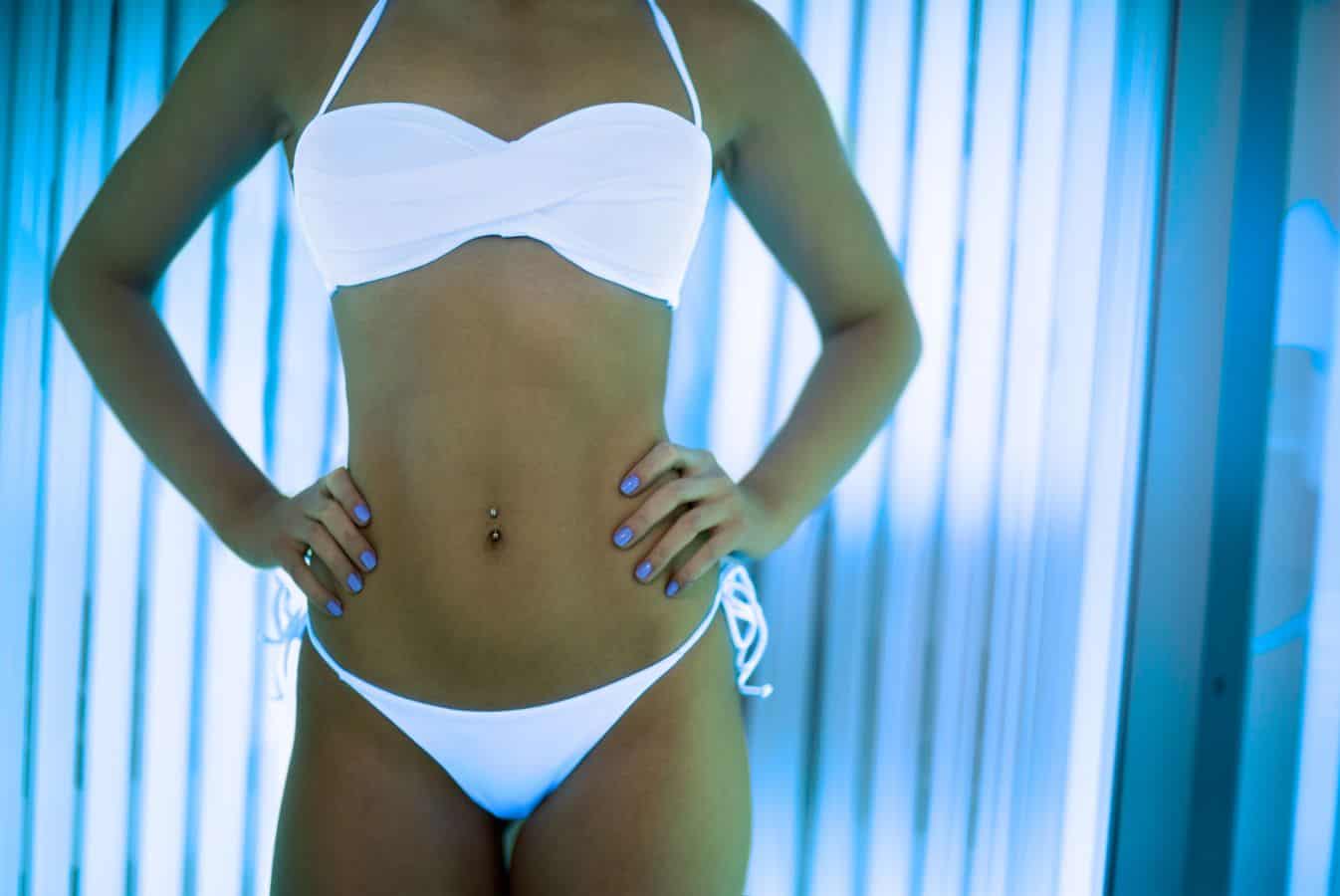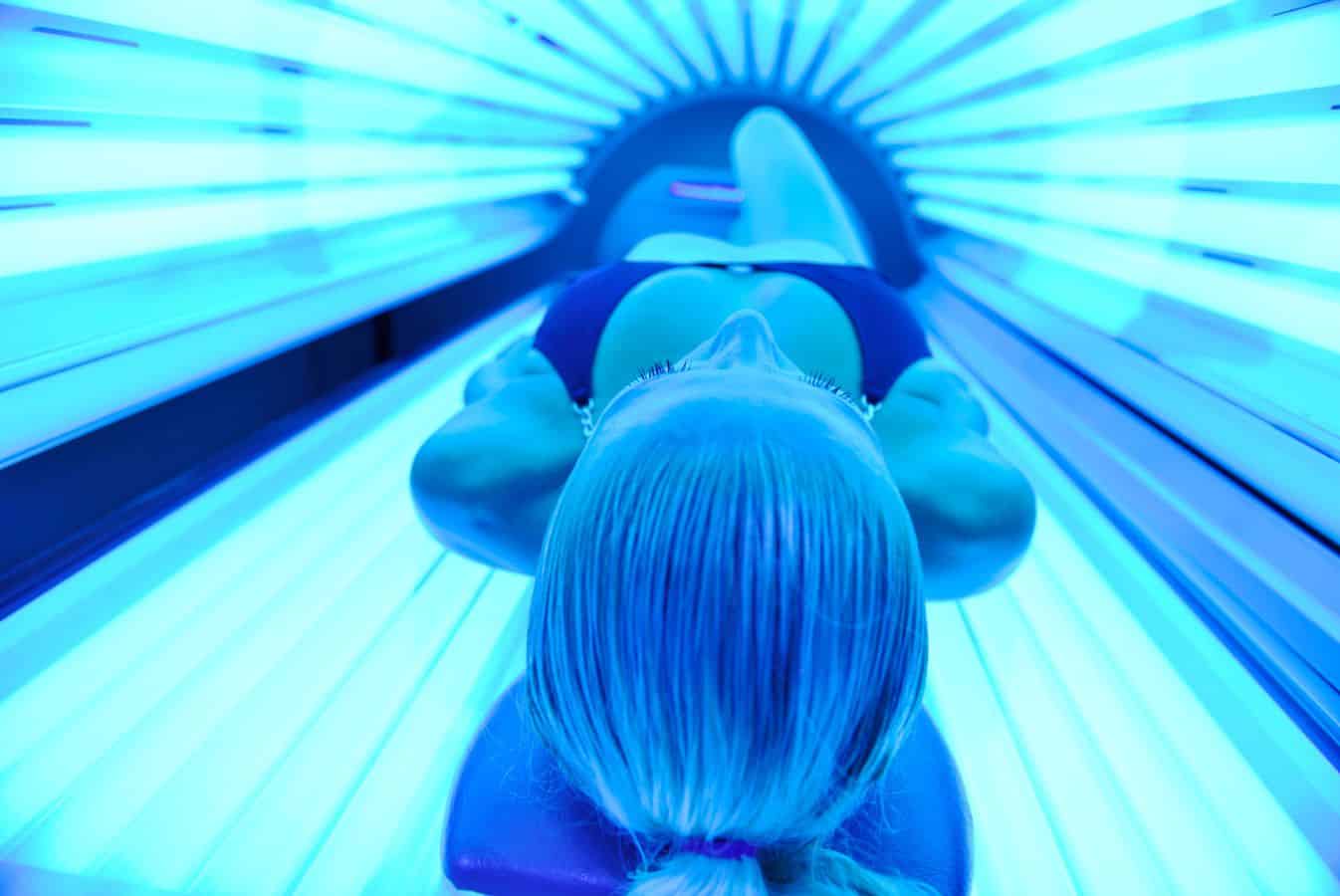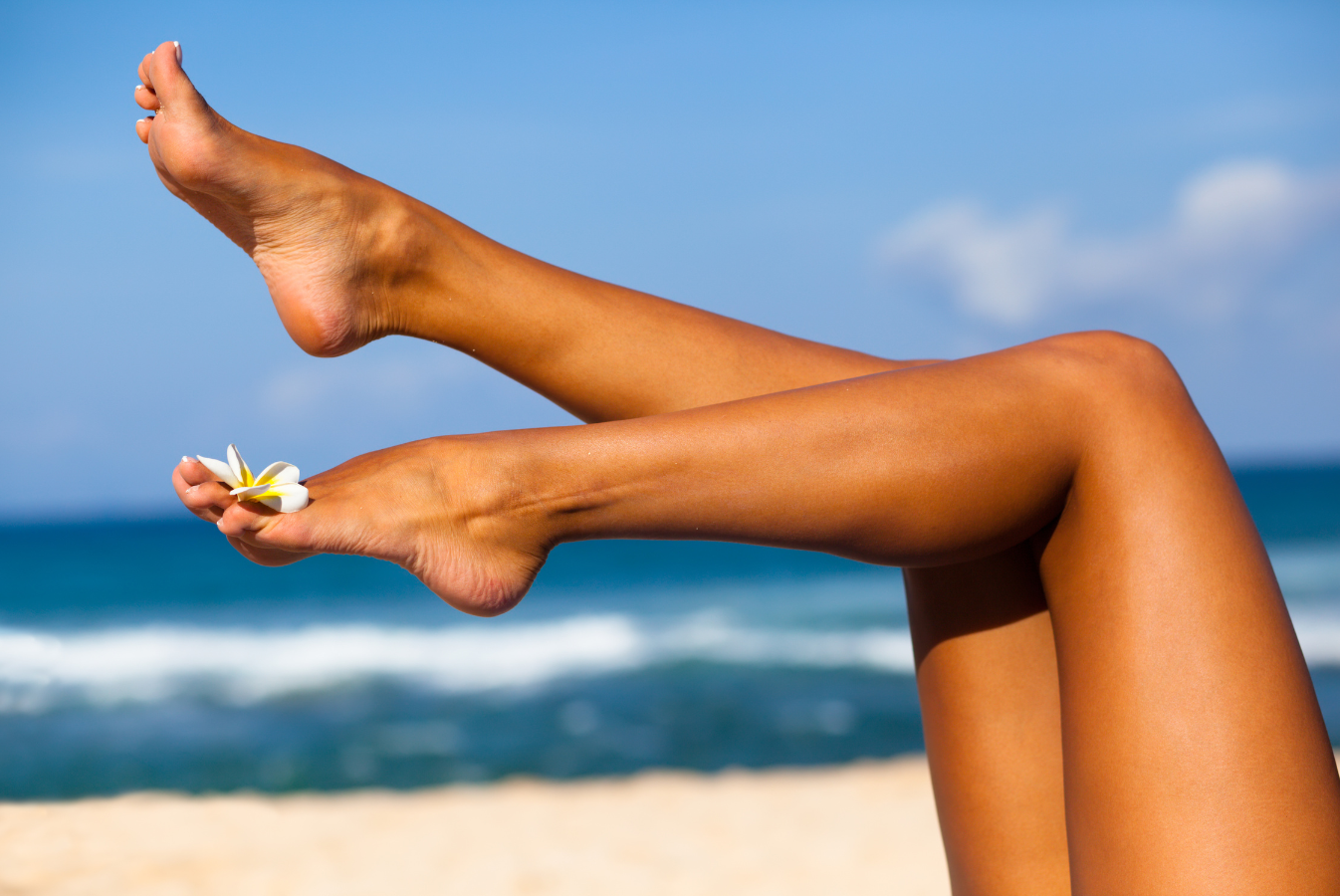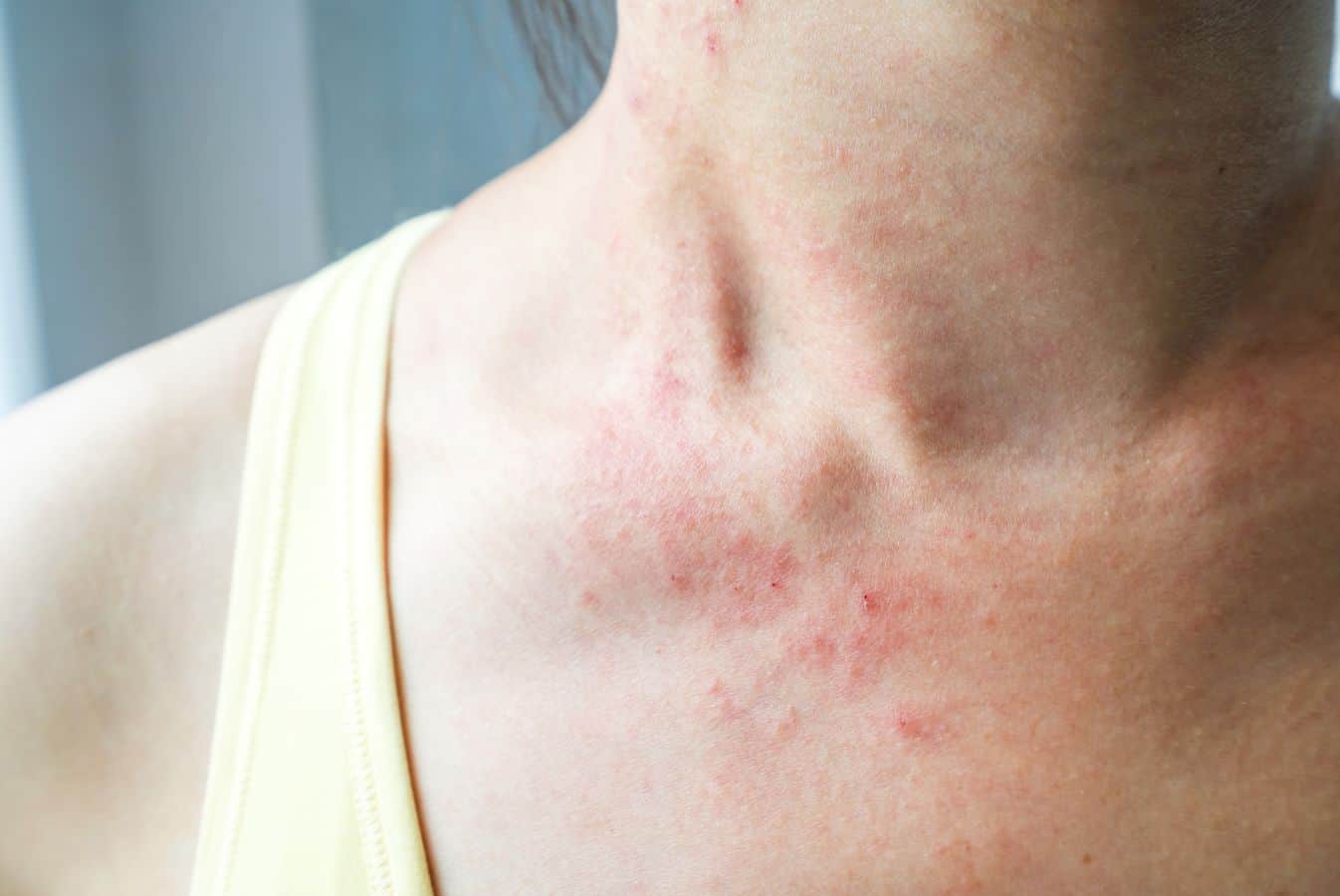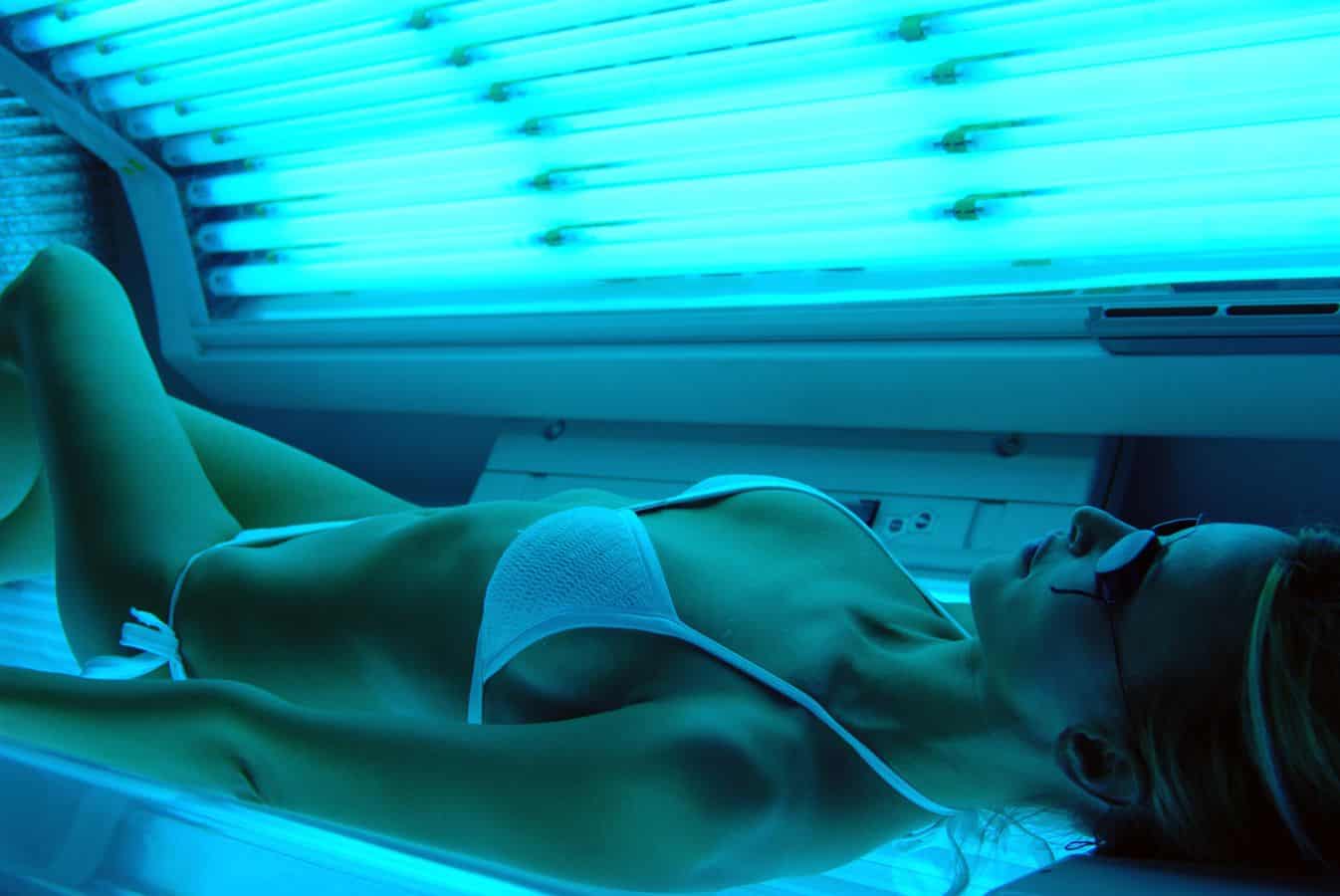We all love a good tan, right? But sometimes, tanning beds can be more trouble than they’re worth. Especially when they leave you with tanning bed burns. Ouch! These are the nasty, red, and sore spots on your skin that happen when you spend too much time under the UV lamps. In this blog post, we’ll tell you everything you need to know about tanning bed burns, how to avoid them, and how to heal them if you get them. We’ll also show you some better ways to get a gorgeous glow without risking your skin health.
Table of Contents
Tanning bed burns are a common occurrence among individuals who frequently use tanning beds. Overexposure to UV radiation during the tanning process is the primary cause of sunbed burns. The skin can become damaged, leading to premature skin aging, rashes, and other skin conditions.
The risk of sunbed burns can be minimized by limiting exposure and following proper safety precautions. It’s important to note that dermatology professional organizations recommend seeking medical attention if you experience sunbed burns to prevent further damage to your skin.
Sunbed burns occur when the skin is exposed to too much UV radiation. This overexposure causes the skin to become red, painful, and in severe cases, blistered. The severity of sunbed burns depends on various factors such as the individual’s skin type, length of exposure, and intensity of UV radiation.
Premature skin aging is another potential consequence of sunbed burns. Exposure to UV radiation can cause wrinkles, fine lines, and age spots on the skin. Additionally, individuals who experience frequent sunburns are at an increased risk for developing certain types of skin cancer.
To minimize the risk of tanning bed burns and other related health concerns associated with tanning beds, it’s important to limit exposure time and follow proper safety precautions such as wearing protective eyewear and using appropriate sunscreen.
Dangers of Tanning Bed Burns: Avoiding Tanning Bed Burn Injuries
Tanning Bed Burns: Understanding the Risks and Avoiding Injuries
Tanning beds have become increasingly popular over the years, with many people using them to achieve a sun-kissed glow all year round. However, tanning beds can pose serious risks to your skin health, including the risk of tanning bed burns.
What are Tanning Bed Burns?
Tanning bed burns are a common injury caused by overexposure to UV rays during tanning sessions. These burns can range from mild redness and irritation to more severe blistering and peeling. In some cases, they may even require medical attention.
The Dangers of Tanning Beds
Tanning beds can emit both UVA and UVB rays, which can cause skin damage and increase the risk of skin cancer. UVB rays are responsible for sunburns while UVA rays penetrate deeper into the skin, causing long-term damage such as premature aging and wrinkles.
Using tanning lotions or oils can increase the risk of tanning bed burns as they can intensify the effects of UV rays on the skin. Additionally, some medications such as antibiotics or birth control pills may make your skin more sensitive to UV exposure.
Limiting Tanning Sessions
It is important to limit tanning sessions and avoid using tanning beds altogether to reduce the risk of tanning bed burns and other skin injuries. The American Academy of Dermatology recommends avoiding indoor tanning altogether due to its harmful effects on your skin health.
Instead of using tanning beds, opt for safer alternatives such as self-tanners or spray tans to achieve a sun-kissed glow without the risk of UV exposure. These options provide a temporary color change without damaging your skin cells or increasing your risk for developing skin cancer.
Preventing Tanning Bed Burns
If you do decide to use a tanning bed, there are steps you can take to reduce your risk for developing burns:
Understanding Tanning Bed Burns: Symptoms and Treatment
Symptoms of Tanning Bed Burns
Tanning bed burns are a common occurrence among people who use tanning beds frequently. The symptoms of tanning bed burns can vary depending on the severity of the burn. Mild burns may cause redness and tenderness in the affected area, while more severe burns can result in blistering and peeling.
Redness is one of the most common symptoms of tanning bed burns. The affected area may appear pink or red and feel warm to the touch. This is a sign that the skin has been damaged by UV radiation from the tanning bed.
Tenderness is another symptom that often accompanies tanning bed burns. The affected area may be sore to the touch, making it uncomfortable to wear clothing or move around.
In more severe cases, blistering may occur. Blisters are small fluid-filled sacs that form on the surface of the skin as a result of damage caused by UV radiation. These blisters can be painful and may burst if they become too large.
Medical Treatment for Tanning Bed Burns
If you experience any symptoms of tanning bed burns, it’s important to seek medical attention as soon as possible. Medical treatment for tanning bed burns may involve using topical creams or ointments to soothe the affected area and prevent infection.
Topical creams such as hydrocortisone cream can help reduce inflammation and relieve itching associated with tanning bed burns. It’s important to apply these creams as directed by your doctor or pharmacist to avoid overuse.
In addition to topical treatments, your doctor may also recommend taking pain relievers such as ibuprofen or acetaminophen to manage pain associated with tanning bed burns.
If your burn is severe or becomes infected, your doctor may prescribe antibiotics to prevent further complications such as cellulitis (a bacterial skin infection).
Preventing Tanning Bed Burns
The best way to prevent tanning bed burns is to avoid using tanning beds altogether. If you do choose to use a tanning bed, it’s important to follow safety guidelines and limit your exposure to UV radiation.
Wearing protective eyewear can help prevent eye damage caused by UV radiation, while using a timer can help ensure that you don’t overexpose your skin to the tanning bed’s UV rays.
It’s also important to avoid using tanning beds if you have fair skin, a history of sunburns or skin cancer, or are taking medication that increases your sensitivity to UV radiation.
When to See a Doctor for Tanning Bed Burns: Warning Signs and Symptoms
If you experience severe pain after tanning, it’s important to see a doctor immediately. While some discomfort is normal after using a tanning bed, pain that persists for more than a few days could be a sign of a serious burn or infection. In fact, the American Academy of Dermatology recommends seeking medical attention if you experience any pain or discomfort after tanning.
Other warning signs to watch out for include blistering, swelling, and redness that spreads beyond the affected area. These symptoms could indicate a second-degree burn, which requires medical attention. Second-degree burns are more serious than first-degree burns because they affect deeper layers of skin and can cause scarring.
In some cases, tanning bed burns can lead to more serious complications like skin cancer. If you notice any changes in the appearance of your skin or moles, it’s important to get checked out by a dermatologist. Skin cancer is the most common form of cancer in the United States and exposure to UV radiation from indoor tanning beds increases your risk.
It’s also important to keep in mind that certain medications and medical conditions can increase your sensitivity to UV radiation and make you more prone to sunburns and other types of skin damage. If you’re taking any medications or have any medical conditions that affect your skin’s sensitivity to sunlight, talk to your doctor before using a tanning bed.
If you do experience a tanning bed burn, there are several things you can do at home to help relieve symptoms and promote healing. First and foremost, it’s important to get out of the sun or stop using the tanning bed right away. Applying cool compresses or taking cool baths can help soothe burned skin.
Over-the-counter pain relievers like ibuprofen can also help relieve pain and reduce inflammation. It’s important not to use topical creams or ointments on burned skin unless directed by a doctor as these products can trap heat and make the burn worse.
If your burn is severe or covers a large area of skin, it’s important to see a doctor. In some cases, prescription medications may be necessary to help relieve pain and promote healing. Your doctor may also recommend topical creams or ointments to help soothe burned skin and prevent infection.
Protecting and Healing Your Burned Skin: Tips for Recovery
Rest and Avoid Further Exposure to Heat or Sunlight
If you have burned skin, the first and most important thing to do is rest and avoid further exposure to heat or sunlight. This will prevent further skin damage and allow your skin to start healing. If possible, stay indoors or in a shaded area until your skin has fully healed.
Apply Aloe Vera Gel or Lotion
Aloe vera is a popular natural remedy for sunburns and other types of burns. It contains anti-inflammatory properties that can help soothe the burned skin and promote healing. You can apply aloe vera gel or lotion directly onto the affected area as often as needed throughout the day.
Use Witch Hazel
Witch hazel is another natural remedy that can be used to reduce inflammation and redness caused by burns. It contains tannins that have astringent properties, which can help tighten the skin and reduce swelling. To use witch hazel, simply soak a cotton ball in it and apply it directly onto the affected area.
Seek Medical Advice from Dermatologists
If your burn is severe or shows signs of infection, it’s important to seek medical advice from dermatologists. They can provide you with proper treatment options based on your specific condition, such as prescription ointments or antibiotics if necessary.
Be Patient with the Healing Process
It’s important to be patient with the healing process when dealing with burned skin. Depending on your skin type and the severity of the burn, it may take several days or weeks for your skin to fully heal. During this time, make sure to continue applying soothing remedies like aloe vera gel or lotion.
Avoid Picking or Peeling Skin
While it may be tempting to pick at peeling skin caused by burned skin, doing so can delay the healing time and increase the risk of scarring. Instead, let your body naturally shed dead skin cells as part of its healing process.
How to Prevent Sunburn from Tanning Beds: Tips for Safe Indoor Tanning
Start with a low-intensity tanning bed
If you’re new to indoor tanning, it’s important to start slow and steady. It can be tempting to jump right into the highest intensity tanning bed available, but this can lead to overexposure and sunburn. Starting with a low-intensity tanning bed will allow your skin to gradually build up a tolerance to UV rays.
When using a low-intensity tanning bed, it’s important to follow the recommended time limit for your skin type. If you have fair skin, you may need less time in the tanning bed than someone with darker skin. Be sure to consult with the staff at your local tanning salon for guidance on which beds are best suited for beginners.
Use indoor tanning lotions
Indoor tanning lotions are specially formulated to help moisturize your skin and enhance your tan while reducing the risk of sunburn. These lotions contain ingredients that help accelerate the production of melanin in your skin, which is what gives you that golden glow.
There are many different types of indoor tanning lotions available on the market, so it’s important to choose one that is specifically designed for use in a tanning bed. Look for lotions that contain ingredients like tyrosine or copper peptides, which can help stimulate melanin production.
Limit your tanning sessions
Overexposure to UV rays can cause sunburn and increase the risk of skin cancer. That’s why it’s important to limit your indoor tanning sessions to once or twice a week. This will give your skin time to recover between sessions and reduce the risk of long-term damage.
It’s also important not to spend too much time in any one session. The recommended time limit will depend on your skin type and the intensity of the bed you’re using, so be sure to consult with staff at your local salon for guidance.
Protect Your Eyes
UV rays can cause damage to your eyes, so it’s important to wear protective goggles during indoor tanning. These goggles are specially designed to block out UV rays and protect your eyes from damage.
When choosing goggles, make sure they fit snugly around your eyes and don’t allow any light in. It’s also a good idea to bring your own goggles with you to the salon, as shared goggles may not be properly cleaned between uses.
Consult with a dermatologist
If you have sensitive skin or a history of skin cancer, it’s important to consult with a dermatologist before starting indoor tanning. A dermatologist can help determine if indoor tanning is safe for you and provide guidance on how best to protect your skin.
They may also recommend alternative methods of achieving a tan, such as spray tans or self-tanners. Remember that no tan is worth risking long-term damage to your skin.
Liability for Tanning Bed Injuries: Can the Salon be Held Responsible?
Many people wonder who is responsible for the harm caused. While individuals may be at fault for not following safety guidelines or using tanning beds improperly, there are cases where the salon or its employees can be held liable.
Tanning salons have a duty of care to their customers to ensure that they are providing a safe environment and proper instructions on how to use their equipment. If a salon owner or employee fails to meet this duty of care, they may be considered negligent and held responsible for any resulting injuries.
In some cases, lawsuits have been filed against tanning salons and their employees for negligence. These cases often involve burns or other injuries that occur as a result of faulty equipment, lack of maintenance, or failure to provide adequate warnings about the risks associated with indoor tanning.
If you have suffered an injury due to negligence on the part of a tanning salon or its employees, you may have grounds for a lawsuit. However, it is important to note that proving negligence can be difficult in these types of cases.
To establish liability in a lawsuit against a tanning salon, you must prove that the salon breached its duty of care and that this breach was the direct cause of your injury. You must also show that you suffered damages as a result of your injury.
It is important to seek legal advice if you believe that you have been injured due to negligence on the part of a tanning salon or its employees. An experienced attorney can help determine whether you have grounds for a lawsuit and guide you through the legal process.
In some cases, manufacturers may also be held responsible for injuries caused by faulty equipment. If it can be shown that the manufacturer knew about defects in their products but failed to take appropriate action, they may be found liable for any resulting injuries.
Ultimately, determining liability in cases of tanning bed injuries can be complex and may require the input of legal experts. However, if you have suffered an injury due to negligence on the part of a tanning salon or its employees, it is important to know that you may have options for seeking compensation.
Remember, always prioritize your safety when using tanning beds. Follow safety guidelines, use protective equipment such as goggles, and be aware of the risks associated with indoor tanning.



